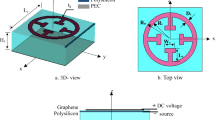Abstract
At the first glance, the expression “transparent superconductor” may seem an oxymoron. Still, the first principle calculations [A. Nakanishi, H. Katayama-Yoshida, Solid State Commun. 152, 24 (2012)] and experiments [A. Kumatani, T. Ohsawa, R. Shimizu, Y. Takagi, S. Shiaki, T. Hitosugi, Appl. Phys. Lett. 101, 123103 (2012)] show that the materials that behave as superconductors at low frequencies and do not absorb in the optical domain may exist. Virtual excitation of the collective modes of such superconductors in a magnetic field appears as an efficient way to realize the nonlinear interaction of light at the level of two single photons. The essence of the effect is in the fact that the ponderomotive energy is proportional to the ratio of the charge squared to the mass of the “collective particle” interacting with radiation, e2∕m, and therefore, for a “particle” representing a collective motion of many electrons, it scales linearly, and its second-order correction quadratically with the number of the electrons involved. This general situation is analyzed in detail in the framework of a simple model of a fiber tube waveguide equipped with a clean superconductor layer. It turns out that for realistic parameters, at the μ-scale of the tube diameter and the cm-scale of the fiber length, such a system is capable of performing the logic gate operation on the polarization variables of a pair of optical photons.
Graphical abstract

Similar content being viewed by others
References
R.H. Dicke, Phys. Rev. 93, 99 (1954)
A.A. Abrikosov, L.P. Gorkov, I.E. Dzyaloshinski, in Methods of Quantum Field Theory in Statistical Physics, edited by R.A. Silverman (Dover Publications, New York, 1963), pp. 315–320
I.O. Kulik, O. Entin-Wohlman, R. Orbach, J. Low Temp. Phys. 43, 591 (1981)
M.V. Klein, S.B. Dierker, Phys. Rev. B29, 4976 (1984)
A. Nakanishi, H. Katayama-Yoshida, Solid State Commun. 152, 24 (2012)
For details see I.N. Toptygin, Phys.-Uspekhi 60, 935 (2017)
J.H. Eberly, J. Javanainen, K. Rzazevski, Phys. Rep. 204, 331 (1991)
For details see H. Kleinert, Collective Classical and Quantum Fields (World Scientific, Singapore, 2018)
A.J. Leggett, Prog. Theor. Phys. 36, 901 (1966)
Author information
Authors and Affiliations
Corresponding author
Additional information
Contribution to the Topical Issue “Quantum Correlations”, edited by Marco Genovese, Vahid Karimipour, Sergei Kulik, and Olivier Pfister.
Supplementary material in the form of one PDF file available from the Journal web page at https://doi.org/10.1140/epjd/e2018-90336-y
Electronic supplementary material
Supplementary data
Rights and permissions
About this article
Cite this article
Akulin, V. Nonlinear coupling of photons via a collective mode of transparent superconductor. Eur. Phys. J. D 73, 8 (2019). https://doi.org/10.1140/epjd/e2018-90336-y
Received:
Revised:
Published:
DOI: https://doi.org/10.1140/epjd/e2018-90336-y




